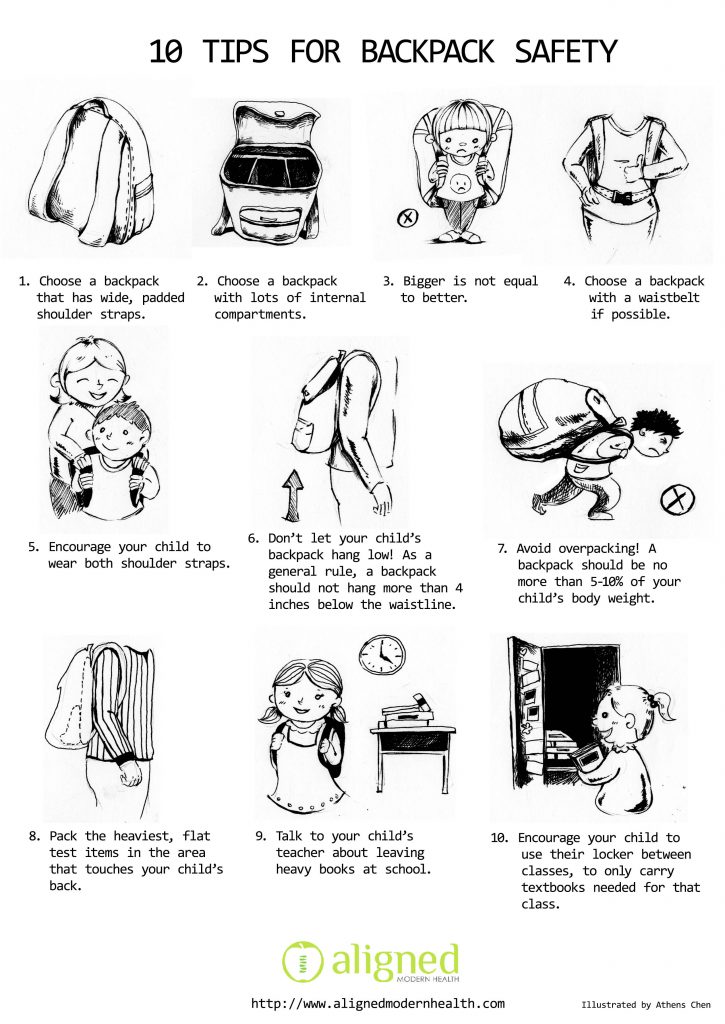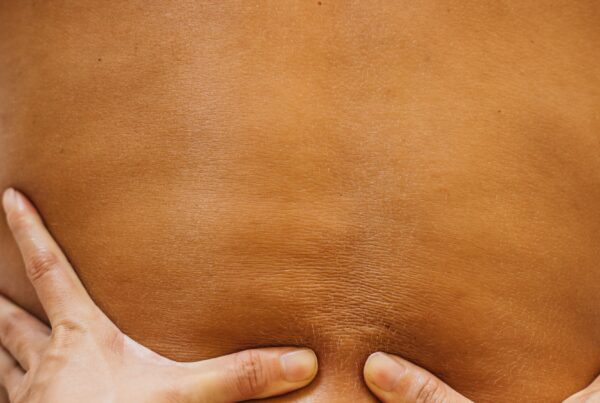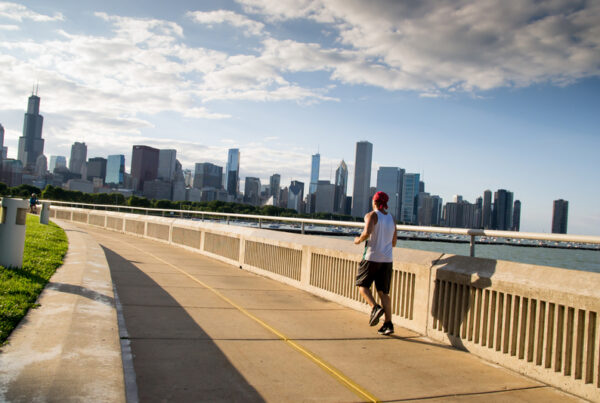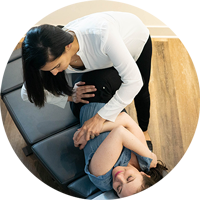Most of us remember carrying backpacks in school; we’re also pretty familiar with the aching backs and sore necks they can cause. In fact, of children carrying heavy backpacks to school, about 60% had experienced back pain as a result. But backpacks don’t have to be so uncomfortable – there are ways to ease the load. Read on for tips to help prevent the needless pain that backpack misuse could cause students in your household.
Add This Infographic to Your Site
Choosing the Right Backpack:
Choose a backpack with padded shoulder straps, the wider the better. Non-padded straps are uncomfortable, and can dig into your child’s shoulder. Wide straps also help to evenly distribute the load, meaning there is less stress on any one area or side. Also consider a backpack with individualized compartments, which will position the contents more effectively and even out the load. When it comes to backpacks, bigger is not necessarily better. The more room there is in a backpack, the more your child will carry, and the heavier the backpack will be. If possible, find a backpack that has additional padding in the area that rests against your child’s back. Backpacks with a waist belt are a great choice, as these help to distribute the load more evenly and remove stress from your child’s lower back.In recent years, roller packs – or backpacks on wheels – have become popular. They will take the load completely off your child’s back.
Backpack Usage:
Encourage your kids to wear both shoulder straps when carrying their backpacks. Carrying the backpack around by one strap can cause a disproportionate shift of weight to one side, increasing the risk of injury. Many kids also tend to wear their backpacks “low”, resting against the lower lumbar region of the back or buttocks area. As a rule of thumb, the backpack should never hang more than 4 inches below the waistline. A backpack that hangs too low increases the weight on the shoulders, causing your child to lean forward when walking. Ideally, the backpack should be in the middle or upper back (just below the shoulders), and letting the bottom rest on the hips/pelvis is ideal. Try to avoid over packing. Make sure your child’s backpack weighs no more than 5 to 10% of his or her body weight. Remember to pack the heaviest, flattest items in the area that touches your child’s back.
What Parents Can Do:
If the backpack is still too heavy, talk to your child’s teacher. Ask if your child could leave the heaviest books at school, and bring home only lighter hand-out materials or workbooks. Encourage your child to use lockers between classes if available, to carry only the textbooks needed for that class. If your child is experiencing any pain or discomfort resulting from back pack use, consider seeing a chiropractor. Doctors of chiropractic are licensed and trained to diagnose and treat patients of all ages, and will use a gentler type of treatment for children. In addition, chiropractic doctors can prescribe exercises designed to help children develop strong muscles and good posture habits.










